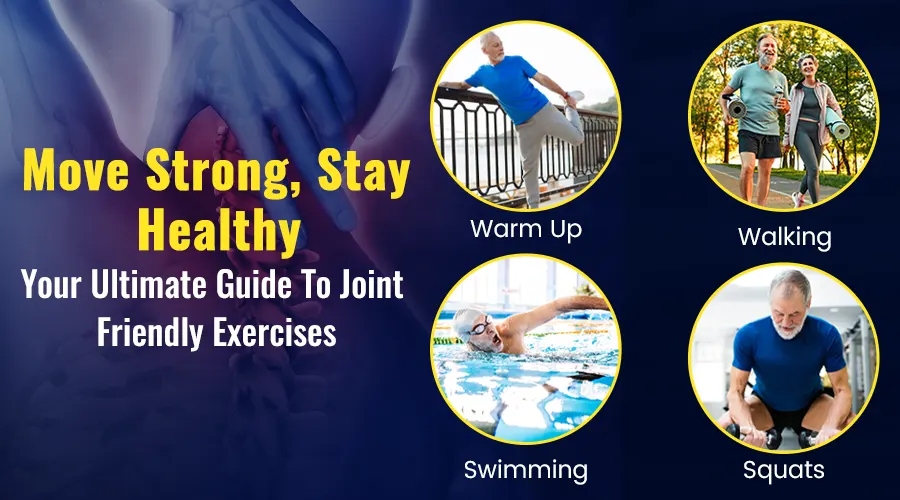 Best Exercises To Keep Your Joints Strong
Best Exercises To Keep Your Joints StrongImagine this: You wake up one morning, all excited to hit the trails for a jog, only to be met by a dull ache in your knees. Does any of this sound familiar? Too many of us have hit that frustrating moment when our joints reminded us they’re just not that spry anymore.
Whether it is due to age, sedentary living, or just plain wear and tear, knee health is a part of our well-being journeys often relegated to the back burner.
“The more proactive you are in preserving your joints, the longer we anticipate they will last,” says Dr. Lange.
No fear! Today, we’re looking at exercises designed to enhance strength and suppleness in your knees. By targeting the health of these joints, we regain ease of mobility and can live active lives without aches.
Get ready with your mats, and let’s flow into some effective moves that will give your knees the love and care they deserve.
Understand Your Joints: The Foundation of Movement
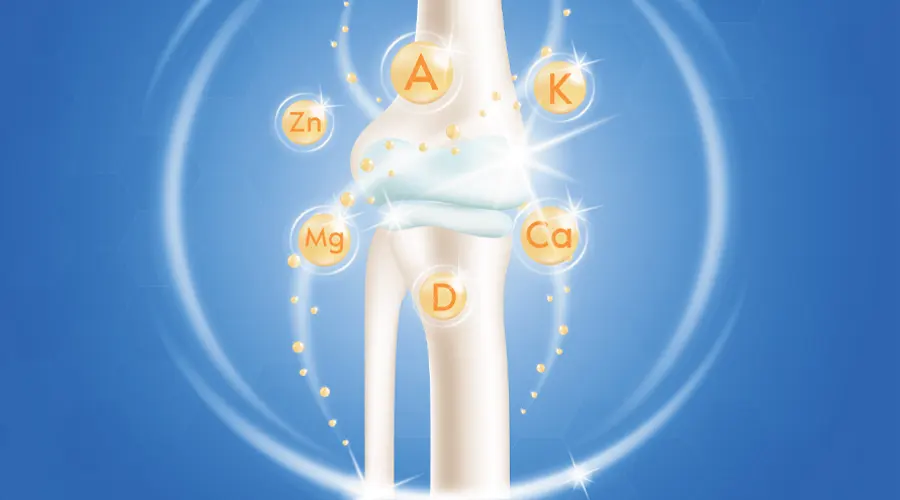 Foundation of Movement
Foundation of MovementBefore we jump into the exercises, let’s first talk a bit about why joint health is such a huge deal. Our joints really are the unsung heroes of our body in the sense that they allow us to move, dance, and play. But they are also prone to wear and tear, which can mean discomfort and reduced mobility.
Joints are pretty complex. Essentially, they are the connecting points of bones, padded with cartilage and held in place by ligaments and tendons. If all goes according to plan, you won’t know they’re there. But if something starts to go wrong with those joints, man, you’ll feel it!
Common Causes Of Joint Pain Include
- Age-related wear and tear
- Injuries
- Arthritis
- Overuse or repetitive stress
The good news, however, is that exercise can make a huge difference in having healthy joints.
Regular appropriate exercise builds strength in the muscles around the joints and brings flexibility to them as well, at the same time reducing inflammation The cartilage in the joints also gets tougher and healthier. It’s like dosing the joints daily with a refreshing elixir!
Gary Calabrese, Senior Director, of Rehabilitation and Sports Medicine at Cleveland Clinic suggests that, “You should pick exercises and activities that you enjoy and that meet a low joint load outcome.”
Warming Up: The Key To Safe Joint Exercises
 Warming Up
Warming UpBefore diving into the core of our exercises, it’s important to discuss the significance of warming up. Much like when you’re baking something in the oven and you preheat it – it just really helps things run really smoothly!
Here are some examples of easy warm-up exercises for strengthening joints:
- Light walking or marching in place (5-10 minutes)
- Arm circles, 10-15 in each direction
- Easy leg swings, 10-15 per leg
- Ankle rotations, 10 in each direction
Keep in mind that the goal is to get the blood flowing and the joints loose, not to sweat. Easy does it; listen to your body.
Low-impact Aerobic Exercises: Your Joints’ Best Friends
 Low-impact Aerobic Exercises
Low-impact Aerobic ExercisesWhen it comes to selecting low-impact exercises for joint health, you have some great options. The following activities provide a good cardiovascular workout, but are less stressful on, or have less impact on, your joints.
- Walking: Simple and effective. You can do it almost everywhere. Start off with walks of 10 minutes at first, then gradually increase the time as your comfort and ability allow.
- Cycling: This can be done either by riding around your local neighbourhood or on a stationary bike. It’s great for your joints, as it builds up the muscles in your legs with none of the jerks of running.
- Swimming: This is what many fitness professionals call the perfect exercise for the health of one’s joints. The water makes supporting the weight of the body easy on joints, yet resistant to building strength.
Pro tip: Even though you can make a different with less aim for a minimum of 150 minutes of moderate-intensity aerobic physical activity each week. That is only 30 minutes per day, five days every week!
Strength Training: Building Your Joint Support System
Now, don’t let the term “strength training” give you jitters. We are not talking about bodybuilding here. Building strong muscles around your joints is like giving them protective armor.
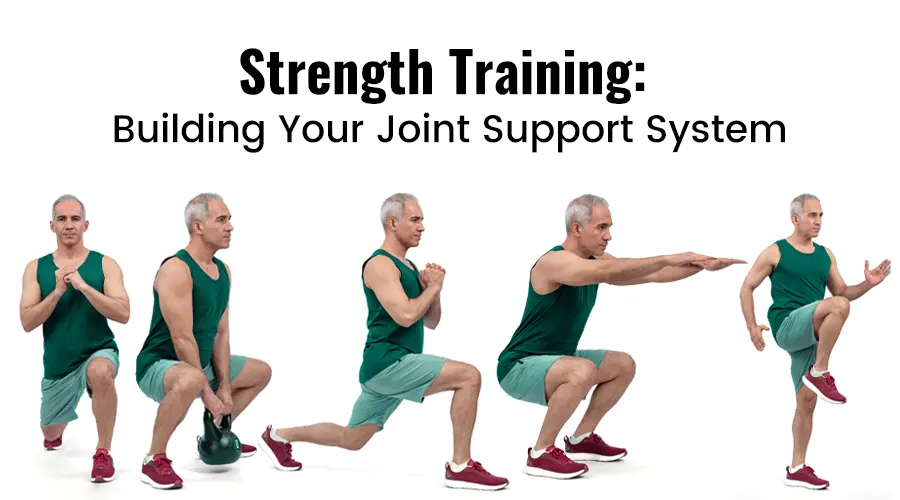 Strength Training
Strength TrainingBest Strength Training Exercises For Joints
- Leg Presses: These work well to strengthen the legs while bracing the knee joints.
- Squats (modified versions): Wall squats, progressing to body weight squats
- Lunges (modified versions): These are good for balance and strength in the legs. If regular lunges are too difficult, try partial lunges, or even use a chair.
Start slow when doing these exercises, but do not be afraid of really using the joints, as that is what makes them stronger.
How To Use Resistance Bands And Weights Safely
- Begin with lighter weights or resistance
- Focus on proper form and not weight
- Gradually increase weights with the build-up of your strength
Remember, consistency is key in any manner when it comes to building strength for joint stability and support. It is best if you manage to do 2-3 strength training workouts per week. Rest on days in between.
According To Dr. Maria Knobel
Strength training exercises like squats and lunges strengthen the muscles that support joints, reducing stress on the knees and hips. Low-impact aerobic exercises, such as swimming and cycling, provide cardiovascular benefits while minimizing joint strain. Flexibility exercises, including yoga and Pilates, improve joint range of motion and reduce stiffness, helping maintain overall joint mobility and health. Together, these practices are essential for joint health and managing conditions like arthritis.
Incorporate Supplements
While strength training is essential in supporting the joints, there are ways to supplement joint support through the best forms of joint supplements.
Popular options include Supplements with Glucosamine And chondroitin that have benefits that may include support for cartilage and the lessening of joint pains.
Apart from the above, turmeric which contains curcumin, has also been known to, have anti-inflammatory benefits and may help reduce joint pain.
 JointXL Plus
JointXL PlusJointXL is a supplement that you can include in your diet since it contains all the important ingredients for support of our joints.
However, what needs to be stressed is the fact that supplements can be helpful, they are not a miracle though.
Remember, supplements are not a replacement for a healthy diet. It is important to eat a nutritional diet, and using the supplements to make it even healthier.
Consult with your physician and consider adding supplements to your diet. Just remember that supplements are designed to help enhance, not take the place of, healthy living with an emphasis on joint health.
Flexibility And Balance: The Dynamic Duo For Healthier Joints
Flexibility exercises are important for joint health and balance, which maintain flexibility and prevent injuries. Here are some exercises to improve your flexibility:
Yoga: There are certain poses that can do wonders in bringing flexibility to joints. Here are the simple poses to start with:
- Cat-Cow stretch
- Child’s pose
- Warrior I and II
Pilates: Very good for core strength and body awareness all over, which helps protect your joints while performing other activities.
Balance exercises: Use activities such as standing on one foot and heel-to-toe walking to enhance balance and prevent falls.
Flexibility exercises should be done 2–3 times per week. Flexibility can be improved at any age.
Exercises That Work With Certain Joints
Sometimes, you may find a few joints need a little extra attention. Here are exercises focused on knee welfare and for some other joint pain:
Knee Exercises
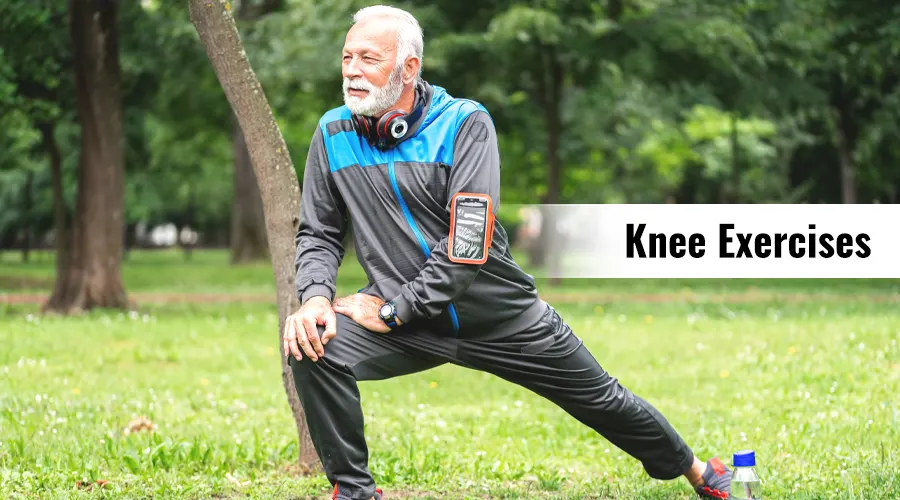 Knee Exercises
Knee Exercises- Chair squat: Stand infront of a chair, and slowly lower yourself onto the seat, without dropping. Then stand back up again.
- Hamstring curls: Stand and bend one knee, bringing your heel towards your buttocks, then lower it back down.
- Step-ups: Step onto a sturdy platform with one foot, then bring the other up to join in, stepping down.
Hip Exercises
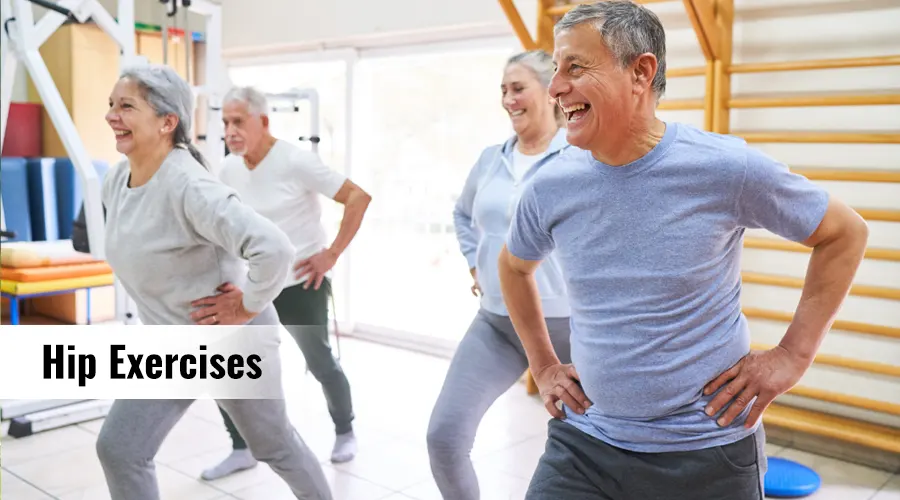 Hip Exercises
Hip Exercises- Hip bridges: The patient is supine on his back with knees bent and feet flat on the floor, and lifts off his hips toward the ceiling while squeezing the glutes.
- Clamshell exercise: Lie down sideways, bending your knees and bringing your feet together; then lift the top knee, keeping your feet in contact.
- Standing hip abductions: This is a standing position where one raises the limb sideways while straight, then lowers it.
Shoulder Exercises
 Shoulder Exercises
Shoulder Exercises- Arm circles: The patient stands with the arms to the sides with the hands extended, then begins to make small circles that progressively increase in size.
- Wall push-ups: Stand facing the wall with your hands on the wall, then do push-ups by bending at the elbows and moving your body towards the wall.
- Shoulder blade squeezes: Sit or stand with your arms at your sides, then squeeze your shoulder blades together and hold for a few seconds.
If you have existing problems with your joints, it becomes all the more important to start slowly and modify exercises as needed. Remember to consult a healthcare professional and/or physical therapist before initiating a new exercise program.
Tips For Safe Exercise: Protecting Your Joints
Always remember these few tips while working out on how to prevent injuries in joints during exercise:
- Listen to your body: If your body hurts after the workout, it is a sign that you are doing too much. If it only hurts during the exercises, but the pain goes away shortly after the workout, that is okay.
- Don’t skip the warm-up and cool-down: These are really important for preparing your joints and preventing injury.
- Ramp up gradually: Rome wasn’t built in a day, and neither is joint strength! Safe strength training routines for people with joint issues might involve using lighter weights, focusing on more repetitions, or working with resistance bands instead of free weights.
Combining Physical Activity With Other Joint Health Strategies
Exercise is an important part of the equation, but it’s not the only one. Here are some other strategies to help support your efforts:
- Nutrition: A well-balanced intake abundant in anti-inflammatory food sources greatly makes a big difference in terms of better joint health. Think colorful fruits and vegetables, fatty fish, and nuts. According to Kelly Bilodeau, Harvard Women’s Health Watch, “Anti-inflammatory diet may be good for your joints”
- Supplements: Certain persons find nutritional supplements, such as glucosamine and omega-3 fatty acids, very useful for joint health. Consult your doctor before taking any new supplements.
- Hydration: Keeping the body well-hydrated helps in lubricating and keeping the joints mobile and well-functioning.
- Rest and recovery: Don’t sell short the power of a good night’s sleep and proper rest between workouts.
FAQs
How often should I exercise to keep my joints healthy?
Accumulate at least 150 minutes of moderate-intensity aerobic physical activity every week. Also, do some strength training 2-3 times a week. Flexibility exercises are also important and should be done 2-3 times per week.
Can I exercise if I have arthritis?
Yes, but it’s important to start slowly and talk to your healthcare provider or physical therapist first. They can help you develop an exercise plan that is safe for your condition.
Aren’t high-impact exercises bad for my joints?
Yes. High-impact exercises can put stress on joints, especially if you already have joint problems. Swimming, cycling, and walking are low-impact exercises and are generally easier on the joints.
For how long should I warm up to exercise?
The answer would be that a good warm-up will last around 5–10 minutes in duration. It should be enough to get the blood flowing and joints loose, not tiring you out.
Do supplements really work in benefiting someone who wants to maintain good health in their joints?
Yes, supplements can help you with missing nutrients your body needs. However, their effectiveness is variable from person to person. Always consult a health professional before engaging in taking any supplement or regimen.
Is it normal to feel some joint discomfort after exercise?
Mild aches or soreness after exercise is normal, more so at the initiation of a new workout regime. Sharp pain or one that persists for days is not normal and would call for professional evaluation by a doctor.
Can yoga be beneficial to joint health?
Yes, it can. It enhances flexibility and the strength of the muscles around joints; more significantly, it helps one to balance properly and thus avoids injuries to the joints.
At what age should I start taking care of my joints?
Looking after your joints is never too early. While joint problems are more common as we age, good health practices in exercise and nutrition from earlier in life can help in the prevention of problems later in life.
Conclusion
There you have it – a comprehensive guide on the best exercises to keep your joints strong and healthy. Keep in mind the key is to start slow, be consistent, and listen to your body. Your joints will thank you for the effort you put into keeping them healthy.
So what is keeping you from starting today? Do one or two exercises from this guide. Your future self is certainly going to thank you for the strong, limber joints you’re working on now. To live active, pain-free, and loving the skin and joints you’re in!
Be assured, that taking good care of your joints is a journey, not a destination. Just keep moving, stay positive, and celebrate every step on the way to stronger, healthier joints!


